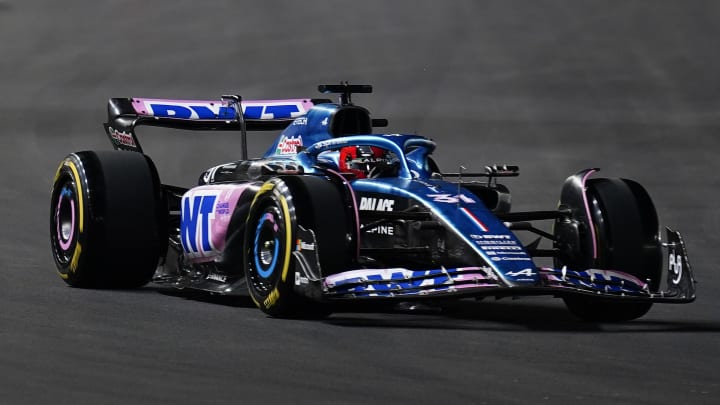F1 News: Outgoing Alpine Team Chief Reveals Renault's Harsh Power Unit Reality - 'Missed The Point'

Alpine's outgoing team principal Bruno Famin revealed that Renault entirely "missed the point" about its power units. He opened up on the harsh reality the parent company faces with the existing underpowered power units, followed by the decision to abandon the development of new power units for 2026.
Famin, who makes way for Alpine's new team principal Oliver Oakes after the summer break, explained that things went downhill for Renault after 2014 when Formula 1 introduced the 1.6-liter hybrid turbocharged V6 power units.
Red Bull, a customer team using Renault's power units, was consistently overshadowed by Mercedes, who dominated the championship for five consecutive years. This dominance led the Milton Keynes outfit to end its partnership with Renault and switch to Honda power units in 2019.
Famin indicated that the team continues to struggle with power unit issues, with the current power unit being down on power by 10 to 15 kilowatts, equating to a two-tenths deficit in lap time. Considering the challenges and costs involved in being a power unit supplier, the French manufacturer is contemplating whether to abandon the development of the 2026 power unit and instead, become a customer team.
Speaking on the Beyond The Grid podcast, Famin revealed that the news of the potential abandonment of the 2026 power unit project was a shocker to the team members working on it at the factory before he addressed the power deficit in the engine. He said:
“I think the big announcement was on Tuesday, last Tuesday, where we had to make the announcement to the staff in Viry that there was a project to switch to a different power unit from 2026. And that was really a shock.
“Right now the current engine is a bit down by 15 kilowatt. I think it’s what FIA figures are saying.
“Renault really missed the point in 2014 when the current regulation was born with the two hybrid systems, Renault totally missed. But now we are 10 to 15 kilowatt down, the power unit is let’s say in average two-tenths of lap time.”
Famin went on to explain the economic impact of manufacturing in-house power units, as opposed to buying them from an engine supplier, revealing that the difference in cost is "huge". He added:
“But we cannot hide behind the power unit. There are different ways of looking at the power unit situation. You have the performance of course but you have also the economical aspect of the thing. It’s a fact that the business model, to call it like that, is a bit weird.
“We know with the Concorde Agreement the system of the prize fund, which is benefiting to the teams only. And on the other hand, the FIA has the financial regulation on the sporting regulation, which makes mandatory to the PU manufacturer to sell at the cap price per unit to the two teams who would like to have it.
“When you see the R&D costs in developing a PU compared to buying your PU there is a huge difference. And that huge difference is not compensated by any price. Then we are not talking about performance, we are talking about a huge difference in money.
“There is no secret in the difference because we know it’s official and it’s public that the cost cap, the amount of money which is allowed to PU manufacturer and the PU supply price and the price that the PU manufacturer has to sell the PU is also public. It’s something like 120 million euros.”
The departing team principal emphasized that above all, the human aspect will suffer the most if the 2026 project is abandoned. He acknowledged the years of hard work that went into the project and the promising results it had begun to show. He concluded:
“It has nothing to do with being an engine guy or not.
“It has to do with human beings, people who are working hard on a project, engine, gearbox or anything else, fully dedicated for years to their passion, lucky enough to walk in their passion, but to who we are saying that it won’t last anymore.
“And of course, it is very difficult, especially while the 2026 project was delivering quite well. A lot of investment from the people and the first result we had was good. We had chosen to take some very, let’s say aggressive technical option and the first result was saying that it was right to do that.”
